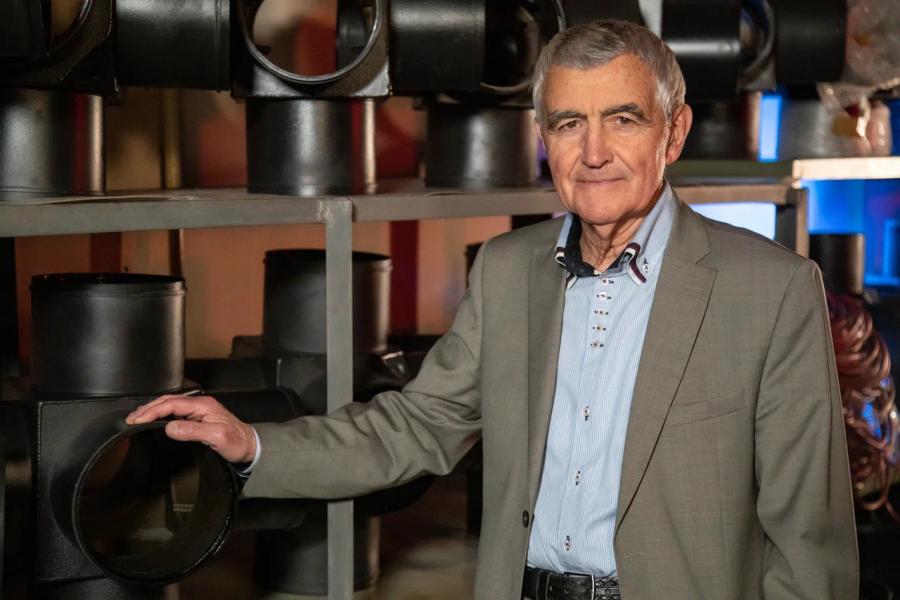In recent days, publications have appeared saying that the Chinese Academy of Sciences plans to install at the bottom of the South China Sea the world's largest and truly grandiose neutrino detection facility with a volume of 30 cubic kilometers. We asked the chief researcher of the Scientific and Educational Center NEVOD of the MEPhI, Professor Anatoly Petrukhin, to talk about this project, as well as the most important events in the field of “hunting for neutrinos”.

Professor Anatoly Petrukhin
- Anatoly Afanasyevich, the first question: where does such interest in neutrinos come from?
- Indeed, it would seem that this is the most uninteresting particle, it has no charge and even mass (if it does, it is very, very small). Neutrinos interact weakly with matter and are very difficult to detect. Nevertheless, huge amounts of money are spent on neutrino research and grand installations are created! Interest in neutrinos is due not only to a particle with amazing properties, but also as a source of information about the Universe. The fact is that a neutrino is the only particle that can arrive from any corner of the Universe. Neutrinos are not deflected in magnetic fields (like charged particles) and are not absorbed in interstellar matter (like gamma rays) and carry undistorted information about their origin (place, energy). But due to the weak interaction of neutrinos, in order to register a sufficient number of them, it is necessary to create kiloton, megaton and even gigaton detectors, the size of which increases with increasing neutrino energy.
- Do such detectors already exist?
- Today, the world's largest neutrino water (more precisely under-ice) detector is IceCube, located in the ice of Antarctica at depths of 1.5 to 2.5 kilometers of ice. Its volume is 1 cubic kilometer and its mass is 1 gigaton. A similar detector is being created in Russia in Lake Baikal; its volume is currently 0.6 cubic kilometers and will soon increase to a cubic kilometer. To appreciate the scale of such installations, we can give the following example. About 8 billion people live on Earth. If we put them all together, then considering that 1 person occupies a volume of about 0.1 cubic meters, we can calculate that the volume of all humanity is only 0.8 cubic kilometers, i.e. less volume than the IceCube detector!
- Can you explain in a popular way the principles of operation of these detectors?
- Light sensors (photomultipliers) are placed inside the detectors in water (or in ice), which record Cherenkov radiation (discovered by Pavel Cherenkov in 1934) from charged particles produced by the interaction of neutrinos with the nuclei of oxygen and hydrogen atoms in water. Such detectors are often called telescopes because Thanks to their size and a large number of photomultipliers, they can reconstruct with good accuracy the direction from which the neutrino arrived. And the search for sources of neutrinos, especially very high energies, is the main task of neutrino astronomy.
- And what are the successes?
- The IceCube detector has already detected several neutrinos from astrophysical sources, but the experience of its operation has shown that a mass of 1 gigaton is insufficient to study ultra-high-energy neutrinos. Therefore, a project to create a detector weighing 10 gigatons in Antarctica has been discussed for several years.
- Now let's return to the topic of our conversation - the Chinese project.
- Similar projects are being discussed in China. At least two proposals are known. One is the creation of a neutrino water detector in the South China Sea, the other is the creation of a much larger detector in Lake Baikal, naturally, together with Russian scientists. Its size should be from 10 to 30 cubic kilometers. It is still unknown which of the projects will be accepted. As for the article (external link) in Nature, which became the reason for publication in the media, it is not about the telescope, but about the results of an expedition to the site where such a telescope is supposed to be located.
- Can you say something about the feasibility of the project in the South China Sea?
- When creating a detector underwater at great depths, at least two problems arise. The first is the level of excitement at the placement. For example, it is unlikely that anyone would think of placing such installations near Cape Horn, where strong winds almost constantly blow, causing rough seas. Secondly, this is the problem of bioluminescence of luminous microorganisms, which has a flash character and can imitate the signal from the passage of high-energy particles. These problems do not exist either in Antarctica or in Lake Baikal. The garlands are installed from a hard surface, which allows them to be installed with the required accuracy. In Baikal (not to mention Antarctica), there is virtually no bioluminescence, which significantly improves the background operating conditions of scientific equipment that registers light flashes.





